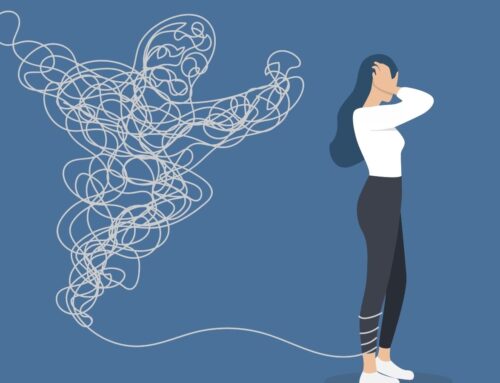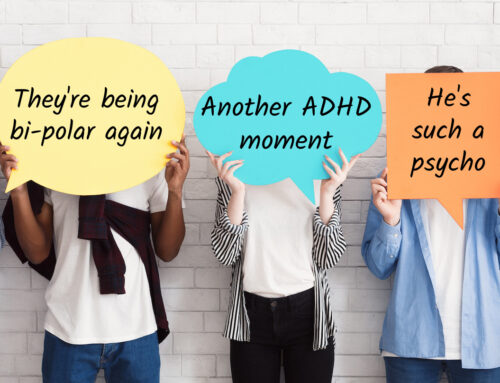Switch on the television or turn over the newspaper’s front page, and you’re sure to find news that weighs heavy on you or heightens your anxiety. What seems like the constant bombardment of the everchanging news cycle can be difficult to digest. There’s clickbait meant to alarm; headlines meant to grab attention; news tickers — that long, horizontal, always-updating stream of soundbites splashed on the bottom of your channel’s screen — meant to keep you watching. There’s news that incites sadness, or worry, or anger, or fear — and it’s endless.
The question of how to find a balance between staying informed and reducing stress is a problem any consumer of news content has encountered. Here are some tips to help you find that balance.
Take a break, and be aware
Have you heard of doomscrolling? There’s a technology design technique called the “infinite scroll.” It’s a feature on many phone apps and websites that removes the irksome “Next page” button; instead, as your thumb scrolls the page, it keeps going, and going, and going. Sometimes, minutes or hours pass and you don’t even realize how long you’ve been online.
The same thing happens with news. It’s important to stay updated and aware of what’s going on in your community, or country, or world — but if you let yourself, you could just keep reading, and reading or watching, and watching. Early in the pandemic, for example, many people found themselves trawling through news sites in bed and through the night, reading up on the latest covid-19 updates as the virus began spreading. The Oxford English Dictionary even listed “doomscrolling” in its 2020 Words of the Year. Everyone seemed to experience it.
With cable news, many channels feature a “ticker” which runs a narrow, horizontal stream of headlines non-stop at the bottom of the television screen. They also show many previews of “What’s Coming Next,” to keep you updated, but also interested in staying through the commercials. Some news channels often employ sensationalism, an editorial tactic that appeals to emotions or is intentionally controversial — making smaller stories seem bigger than they are or leaving out important nuance. Many of the stories that will draw readers or listeners are negative, violent, disastrous, or sad. Headlines are meant to be to attract readers, and deliver a story in a quick sound bite.
Be aware of news and design tactics as you consume your news, including on social media. If you need to, limit the number of news alerts you get, the time you spend reading or watching news, or the types of sources you’re frequenting. If you’re feeling weighed down by a sense of fear or negativity, try taking a break from the news, and catch up later if you need to. And no story can be captured in a few words, so remember that headlines don’t give the full, nuanced picture.
Think about what is within your control
Bad news can make us feel helpless. Sometimes these stories seem distant from your own life — a hurricane or a war far away, for example. Sometimes they seem too enormous and all-consuming — systemic racism, the pandemic or climate change, for example. Sometimes bad news, even if it’s not in your community, causes your own worldview shift, for example making you feel like the world is unsafe or is a bad place.
All these types of news stories can give you a paralyzing sense of powerlessness. The problems seem too far away, or too big, or too impossible to tackle. Some news stories can be particularly triggering. And you’re just left with a sadness or anxiety in the news story’s wake.
If you’re feeling helpless against a societal or global issue, your empathy is at work. You must accept that you can’t solve all the world’s issues. What you can do is do your part to be a positive force in the ways that are possible — in your personal life, your community, and in the other spheres within your control. A study published in March 2020, which analyzed around 70,000 subjects in the United Kingdom over nearly two decades, found a positive relationship between volunteering and well-being, including mental health and levels of distress. Volunteering increases your sense of purpose and groundedness, while also making a positive impact on the world.
What about my kids?
Keeping up with the news during unpredictable times, while reducing worry, for adults is difficult. But what about for kids?
Our world is increasingly interconnected, and children these days have much more access to the world than we did. Between the internet, news sources, school and peers, chances are your children are more aware of all that is happening around them and in the world than you’d think.
With the war raging on in Ukraine, many more parents have asked the question: Should I shield my children from the news? If not, then how do I explain difficult things to them?
Those questions are largely dependent on your child’s readiness and your own comfort levels, and you should take cues from your child to see what is best. It’s possible they know more than you think they do, or that they’ve come across distressing news already. If your child is seeming anxious or concerned, make sure you are there for them to answer their questions and understand the root of their anxieties. You may not have all the answers, but you can talk through issues with them and help them regain a sense of security. Make sure that, if they do come into contact with the news on their own, that they are accessing reputable sources.
If you and/or your family needs some help to process anxieties, including those compounded by the news, the therapists at Georgetown Psychology are here to help.






